
About Andrew Cusack
 Writer, web designer, etc.; born in New York; educated in Argentina, Scotland, and South Africa; now based in London.
Writer, web designer, etc.; born in New York; educated in Argentina, Scotland, and South Africa; now based in London. read more
News
Blogs
Reviews & Periodicals
Arts & Design
World
France
Mitteleuropa
Knickerbockers
Argentina
The Levant
Africa
Cape of Good Hope
Netherlands
Scandinavia
Québec
India
Muscovy
Germany
Academica
The South African Fleet Review
Africa’s oldest navy parades its newest frigates
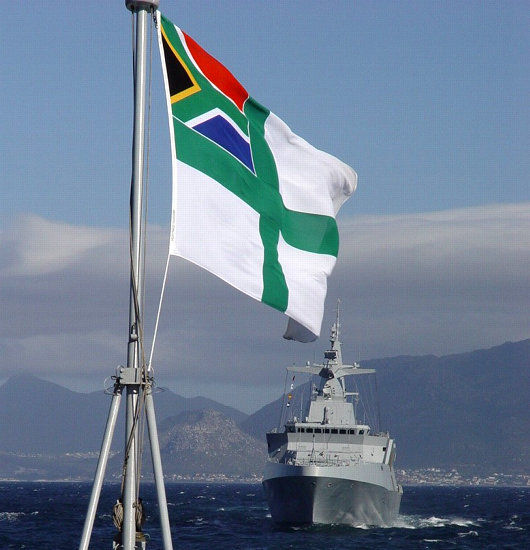
Fleet reviews are not very common occurrences. According to legend, the first fleet review took place when King Henry VIII on a whim gave the order to assemble his navy’s ships as he wanted “to see the fleet together”. On that occasion, the omnivorous monarch was rowed from vessel to vessel and enjoyed a repast on each. The tradition of the monarch reviewing the fleet continued, and usually took place to commemorate the coronation, to welcome a visiting monarch, or to commemorate some other event or occasion of great import.
Since the time of George III, British fleet reviews have typically taken place at Spithead between Portsmouth and the Isle of Wight. The 1814 review celebrating the Treaty of Paris was the last to be composed of only sailing ships, and included fifteen ships of the line and thirty-one frigates: “the tremendous naval armaments which has swept from the ocean the fleets of France and Spain and secured to Britain the domain of the sea”. The 1937 Coronation Fleet Review was made famous by the BBC radio commentary given by Lieutenant-Commander Thomas Woodrooffe. The retired naval officer had met up with a number of chums from his more sea-worthy days in a pub before the broadcast. Woodrooffe’s commentary was so incoherent that he was taken off the air within a couple of minutes; as the fleet was specially illuminated in the evening, Lt.-Cdr. Woodrooffe continually repeated “the Fleet’s lit up”; “lit up” also being a euphemism at the time for being drunk.
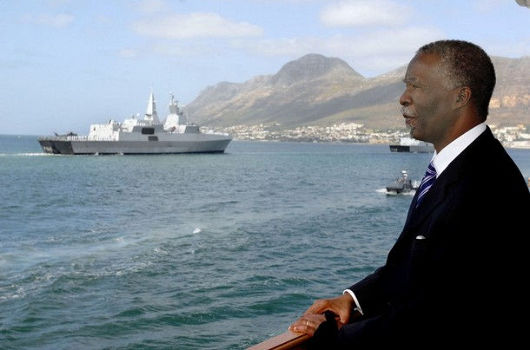
Over the past three years, the South African Navy has commissioned four state-of-the-art Valour-class frigates and three Type 209 submarines, and to celebrate their entering into official service it was decided to have a Presidential Fleet Review.
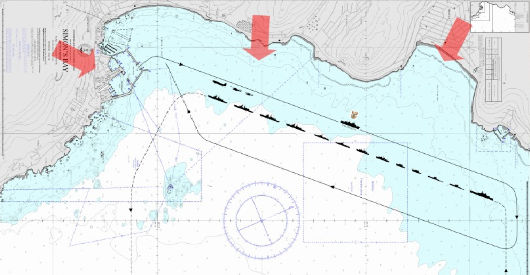
The Presidential Fleet Review took place in Simon’s Bay north of Simon’s Town (Simonstad), the home base of the South African Navy.
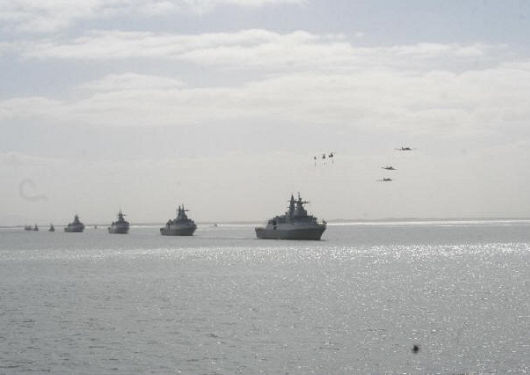
The Valour-class frigates are part of the MEKO family of warships developed by the German shipbuilding firm Blohm + Voss. MEKO is short for Mehrzweck-Kombination or “multi-purpose combination”, a shipbuilding concept based on modularity which aims at reducing costs and increasing long-term adaptability. The Valour-class frigates are classed by Blohm + Voss as MEKO A-200SAN, and make extensive use of “X-form” stealth structural design in which right angles and vertical surfaces are avoided. The ships have a radar signature of vessels half their size as well as 75% less infrared signature (in part due to their exhaust exiting below the waterline).
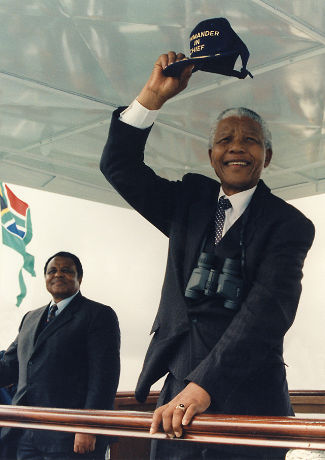
The last fleet review in South Africa was held in 1997, when President Mandela reviewed the fleet in commemoration of the 75th anniversary of the South African Navy.
The frigates — two of which were built in Kiel, the other two in Hamburg — have a top speed of 27 knots and a range of 8,000 nautical miles (at 16 knots), with an endurance away from port of 28 days. Their air capabilities include a flight deck that can handle 2 Westland Super Lynx helicopters, or 1 Super Lynx plus 2 unmanned aerial vehicles (typically used in reconnaissance), or 1 Atlas Oryx utility helicopter (for search & rescue, or transporting up to 20 troops), or 1 Rooivalk attack helicopter. The Oryx and the Rooivalk are products of South Africa’s domestic defense industry, developed by necessity when the United Nations imposed an arms embargo on the country from 1977 to 1994, during which only Israel cooperated with South Africa in military research, exchange, and trade. The surface-to-air missile systems on the vessel were also developed domestically. (The surface-to-surface missiles, meanwhile, are the French-designed Exocets made famous during the Falklands War).
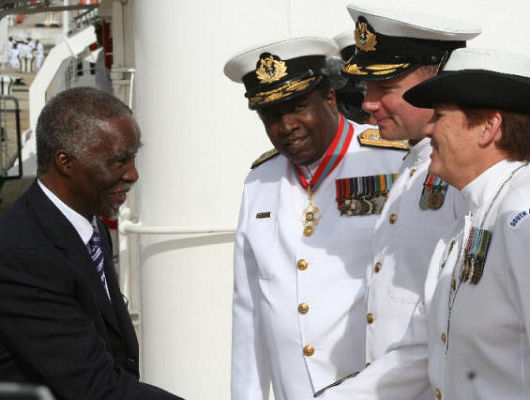
President Mbeki arrived in Simon’s Town by helicopter, and proceeded to board the SAS Protea from which the Commander-in-Chief reviewed the fleet.
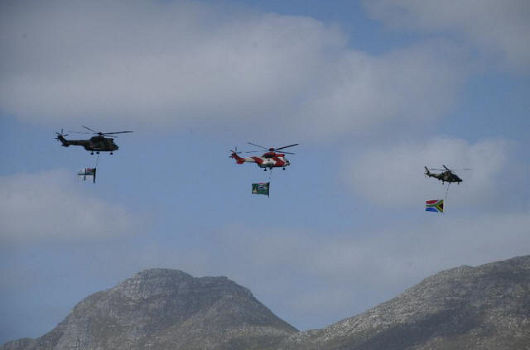
As the lead ship approached the Protea, a contingent of three helicopters from the South African Air Force took part. A Rooivalk led the way carrying the national flag, followed by an Oryx (adapted for Arctic rescue) carrying the Defense Force flag, with a second Oryx carrying the South African naval ensign. While most navies that trace their lineage to the Royal Navy bear the red Cross of St George, the South African Navy have borne a green cross instead since 1952 because the Afrikaner-dominated government of the time lacked an appreciation for those of the country’s traditions that were of English origin. Perhaps this green cross should be called the Cross of St. Nicholas, given the Hollandic peoples’ affection for that holy saint.
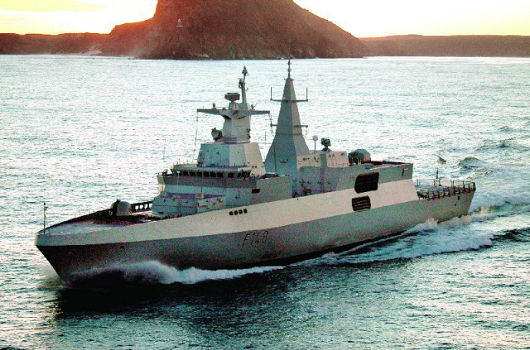
Three of the four frigates are named after battles from South African history, but the lead ship in the review, SAS Mendi (above), is named after the 1917 Mendi incident, in which a troopship full of black South African labourers sank, leaving 616 South African and 30 British crew dead. The black men were members of the 5th Battalion South African Native Labour Corps recruited to work in support of the Allied forces in France during the First World War.
En route from the shipbuilders in Germany to Simon’s Town in South Africa, the SAS Mendi (Captain: Jimmy Schutte) met with HMS Nottingham at the site of the SS Mendi‘s sinking and laid wreaths in commemoration of the dead.
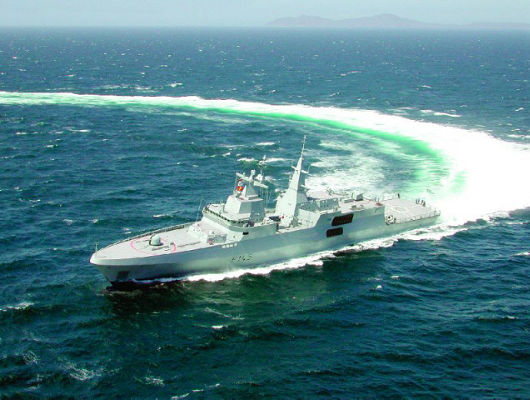
Next was the SAS Amatola (Captain: Guy Jamieson), named after the series of battles between the Xhosa tribe and Great Britain that took place in the Amatola mountain range along the Eastern Cape. In 2007, Amatola became the first South African frigate to participate in Basic Operational Sea Training (BOST) with the Royal Navy since South Africa became a republic in 1961.
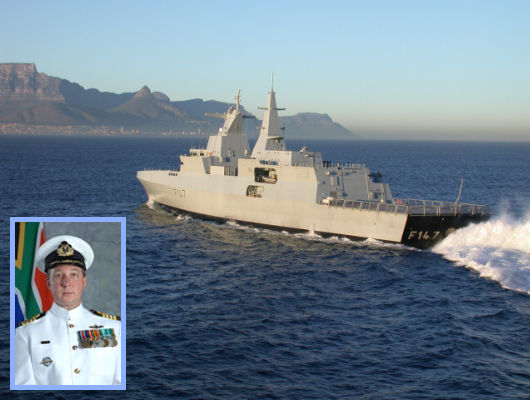
Following Amatola was the SAS Spioenkop, seen above with its dour-faced Captain C.G. Manig. Spioenkop takes its name from the Battle of Spion Kop (as it is usually rendered in English; the ship’s name is in Afrikaans), the great Boer victory over the British. Winston Churchill covered the Battle of Spion Kop as a war correspondent, and Mohandas Gandhi was a stretcher-bearer.
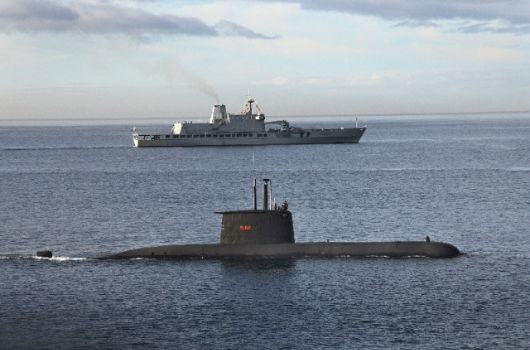
The final frigate in the review was the SAS Isandlwana (not pictured), named after the famous victory of the Zulus in the Anglo-Zulu wars. Isandlwana‘s first commander, Capt. Karl Wiesner, recently handed the vessel over to Capt. B.K. “Bravo” Mhlana, the first black South African to command a frigate. Capt. Mhlana received part of his officer training from the Royal Navy.
After Isandlwana came the offshore patrol vessels SAS Galeshewe and SAS Isaac Dyobha, followed by two minehunters, SAS Umzimkulu and SAS Umkomaas, and an inshore patrol vessel, SAS Tobie. Then came two of South Africa’s three Type 209 submarines, SAS Charlotte Maxeke and SAS Queen Mojdajdi I. The fleet replenishment ship SAS Drakensberg finished up the review.
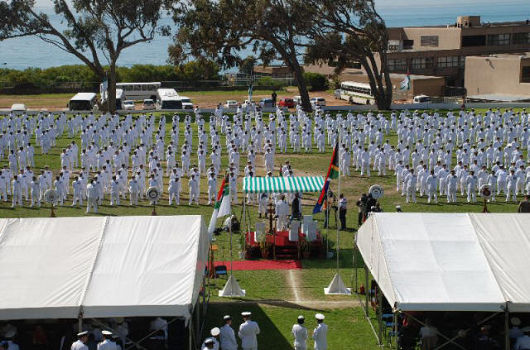
After the Presidential Fleet Review, Mr. Mbeki awarded medals and promotions back on land in Simon’s Town (above) before heading back to Pretoria by helicopter (below).
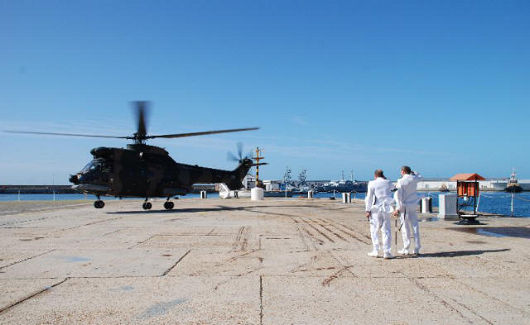
The purchase of the four specially-built frigates included an option to buy a fifth and some politicians have even suggested building a sixth. But the purchase of four has sparked a controversy over whether South Africa really needed four brand new frigates when some of its more useful Israeli-built patrol vessels are nearing the end of their lifelines. The post-apartheid government has proved surprisingly willing, in a time of high unemployment and great economic uncertainty, to invest the country’s resources in maintaining a high-quality army, air force, and navy that acts as a force for stability and order in the continent and especially in southern Africa. Whatever woes betide the land, we can rest assured that a well-equipped navy is guarding the southern seas.
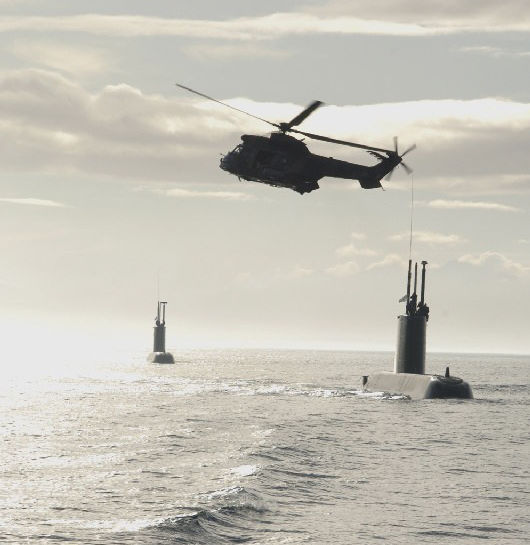
Search
Instagram: @andcusack
Click here for my Instagram photos.Most Recent Posts
- Gellner’s Prague December 19, 2024
- Monsieur Bayrou December 18, 2024
- Dempsey Heiner, Art Critic December 17, 2024
- Vote AR December 16, 2024
- Articles of Note: 12 December 2024 December 12, 2024
Most Recent Comments
Book Wishlist
Monthly Archives
Categories



Ready Aye Ready! We look forward to Mr. Cusack’s fleet review in 2010, when the ‘Royal’ Canadian Navy celebrates its 100th.
Having done my national service in the German Navy I enjoyed this post a lot – and not just because of the MEKO ships. Excellent pictures, and it’s great to see the SA Naval Ensign in teh wind and sunshine, including the traditional St. George’s (well, -ish sort of) cross. I found it hard to suppress a harrumph! about some of South Africa’s more recently created state symbols etc. – but the Navy flag looks convincing enough. Thanks to Mr. Cusack for this truly excellent post.
South Africa. Hmmmm…
A wonderful post.
Just an aside question, does anyone know when the Federal German Navy last did a Fleet Review ?
I beleive the last time the American Navy preformed one was in either in 1999 or 2000 during fleet week in NYC for former Pres. Clinton.
Also, I bleieve the last time the Royal Navy preformed one was for the Queen’s 50th anniv. on the throne.
“The Fleet’s lit up.” Ha! As it happens, my grandfather was responsible for the illuminations on HMS Valiant.
KAN DAAR BESOEK AFGELE WORD BY SIMONSTAD SE VLOOT
ONS GAAN AF KAAP TOE VIR DIE ARGUS LAAT WEET ASB